
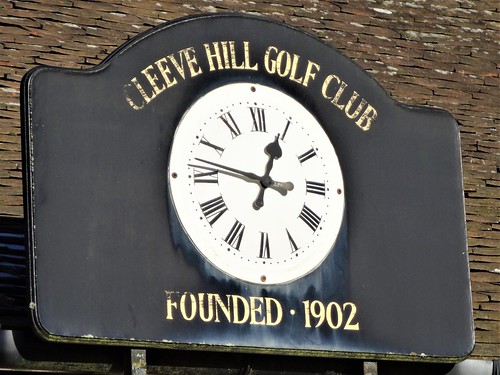
At 1083 feet Cleeve Hill is the highest point in the Cotswolds with commanding views over nearby Winchcombe to the north, Bishops Cleeve and Wales to the west and Cheltenham some four miles distant to the south. Indeed, the renowned Cheltenham Gold Cup was first run on Cleeve Hill from 1815 to 1855 before moving to Prestbury Park just north of Cheltenham. Plenty of horses being exercised are still seen about property. Covering some 1000 acres, the largely limestone (hence the good drainage) Cleeve Common was cleared of trees about 6000 years ago and is the largest unenclosed wold on the Cotswold escarpment. The land has been used for farming, grazing and quarrying. Much of the iconic golden Cotswold stone used for nearby buildings was quarried in and around Cleeve Cloud (a lower summit of Cleeve Hill) and has been for at least two millennia. It is these quarries which give so many holes their character.
The course seems as if it has been around as long as the quarries, but in fact the original course wasn’t built until 1891. It may be the case that Old Tom Morris provided the first design, but it is thought only four holes remain, 13 through 16. That said, I could only find evidence of the 13th being vintage OTM. Cleeve Hill's most iconic hole is the 13th, The Camp. The hole is named so because the green is located on the site of an Iron Age hill fort. The fort would have been occupied from from around 400BC until the Roman Occupation in 43AD. See bottom of what I think is a pre 1900 map.
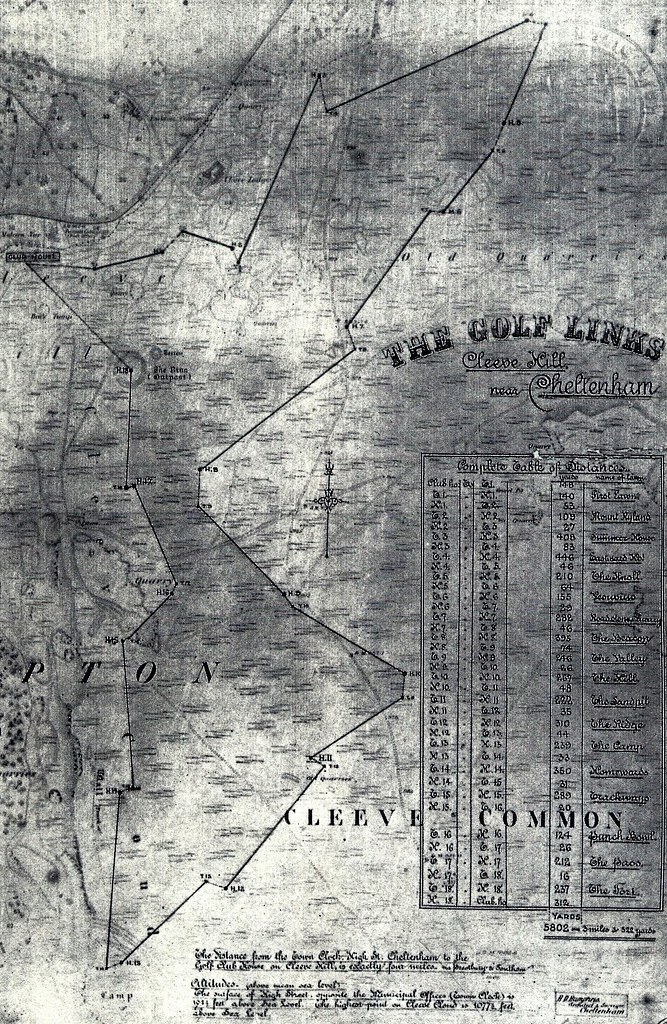
The course has already changed by 1913.
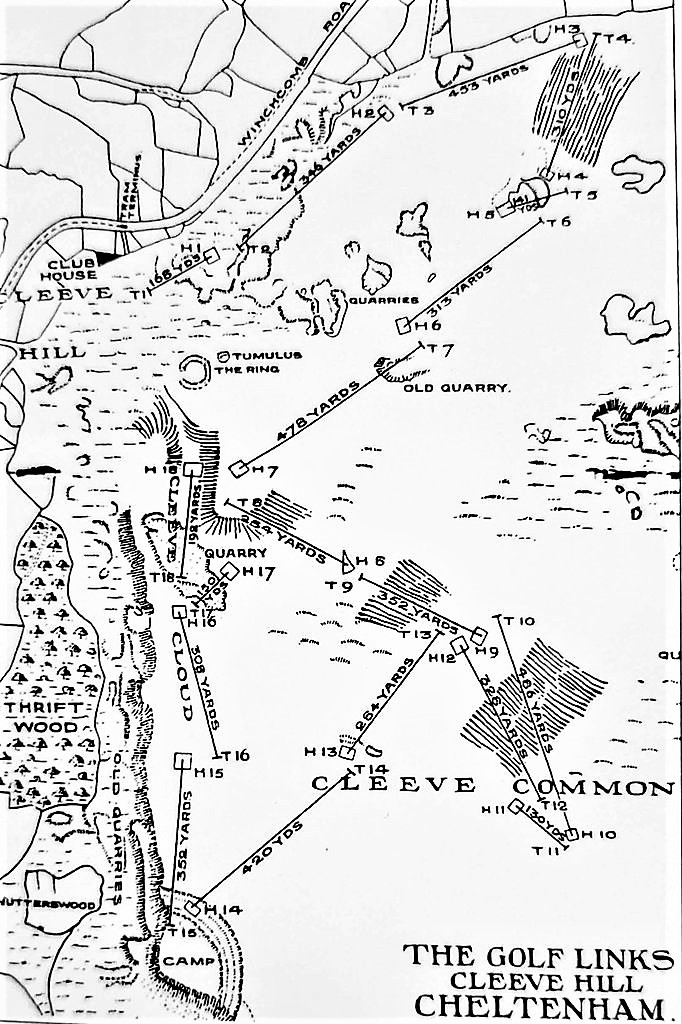
The opening hole from the 1913 design....I think.

A photo of what I think is the no longer existing second hole from the 1913 design. The golfers in the distance are walking to a green outside of shot.
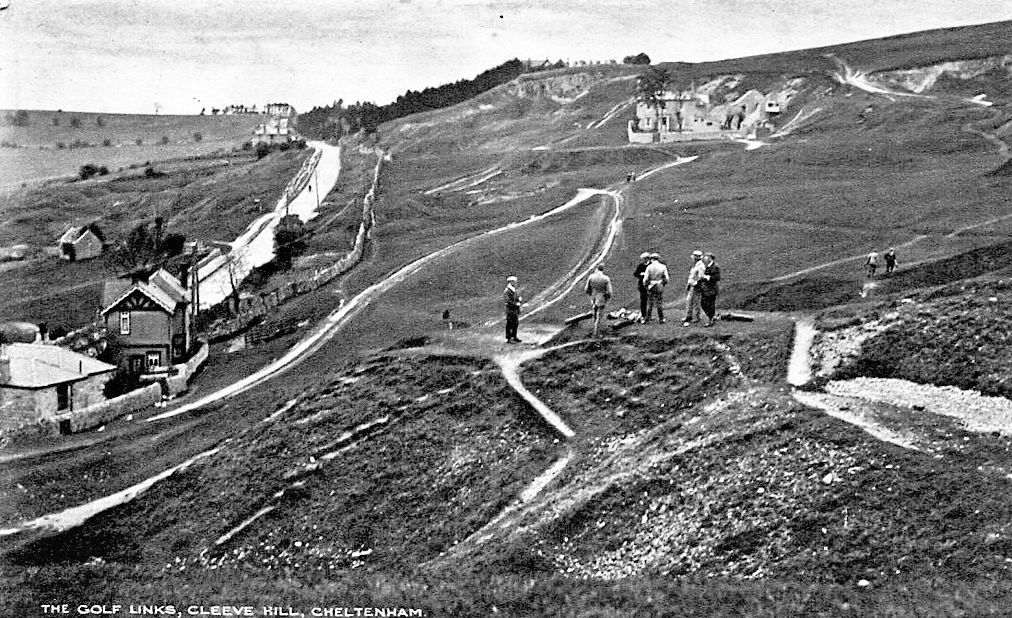
A photo of the second showing the green.

One David Brown, an ex-roofer and designer of another Cotswold beauty, Painswick, was in 1891 engaged to “arrange for the preparation and keeping of the greens.” Mr Brown was famous as the teacher of Queen Victoria and for winning the 1886 Open at Musselburgh, his home green. Famously, Brown was pulled off a roofing job to compete in this Open! Brown later became the professional for Cheltenham GC (wound up in 1935) and The Worcestershire before his departure to the United States where he would finish second in the 1903 US Open. Sadly, David Brown went bankrupt in the Wall Street crash and was deported back to Scotland where he died penniless.

The course must have been a bit rough and ready for Braid’s comments after losing a match to Harry Vardon in 1902 were short and sharp; “You get a great view of Cheltenham.” Additional big matches were held in 1905 and 1924. The international match in 1905 featured Vardon and Taylor against Braid and Herd; all three members of the The Great Triumvirate and the much loved would be fourth member, Sandy Herd. In 1924 two well known British professionals, Abe Mitchell and George Duncan (recent winner of The Open in 1920) played a match to celebrate the opening of the newly extended course. As it happens, the 18 year old Alf Padgham was recently hired as the Assistant Professional. Of course, Mr Padgham went on to become a premier British player, winning The Open at Royal Liverpool in 1936.
It is thought Dr MacKenzie may have worked on the course and produced new 4, 5, 7 & 9th holes around 1914. It is unclear to me if any of these holes are Dr Mac's, however these holes demonstrate a sense of design skill. Of course, changes continued. I am not sure when the current iteration was settled upon, but it was not in the too distant past. A hallmark of the design is blind holes, especially tee shots. The terrain is so hilly that avoiding blind tee shots would have required a degree of construction or long transitions between holes. As it is, there must be seven blind tee shots, surely too many for any course. However, these somewhat annoying shots are not overly hampered with harsh penalties for inexactitude.
So, we have quarries, blind tee shots and a knowledge that things come in threes. It may sound very strange for a course with common grazing rights for five farmers to exhibit anything of an exceptional nature, but true it is. On several occasions it is nothing less than dreamy after cresting a brow; for the greens are one after another exquisitely sited. Second shot courses are often spoken of, but in the case of Cleeve Hill it is nearly as perfect a description of a course as there can be.
A short film from Cookie Jar Golf Podcast.
https://www.youtube.com/watch?v=PRpdtkGhiyk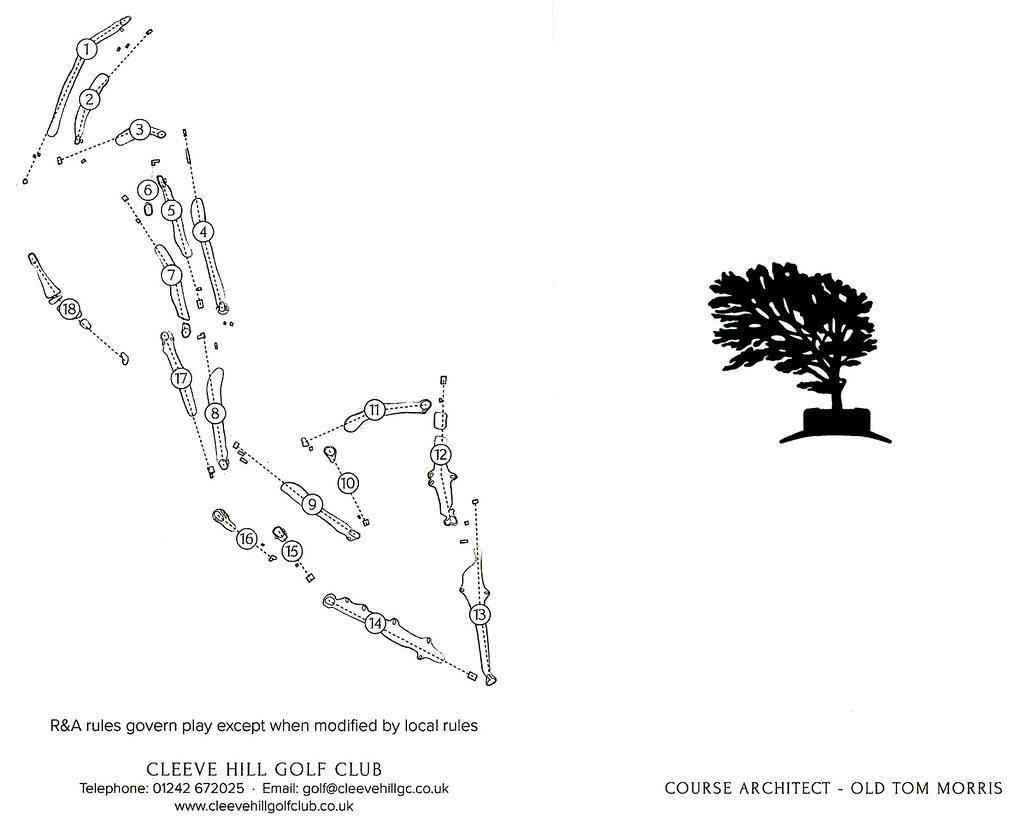

The card of the course can be deceiving due to its 6093 total yards from the yellow tees. However, upon closer inspection, we note there is only one par 5, resulting in a course par of 69. Like Woodhall Spa, Cleeve Hill is a rarity among courses in that it is easier to play to one’s handicap by stepping back to the medal tees – measuring 6443 yards to a par of 71. Bruising par 4s from the daily tees, the 4th and 13th are relatively short three-shotters from the back markers. To further complicate matters, the lone yellow tee par 5 comes straight out the gate at #1.

The 1st and 2nd fairways are essentially shared. In fact, it is quite common to be on the wrong half for both holes. The uphill 2nd hole turns left and many golfers will experience an approach such as this.
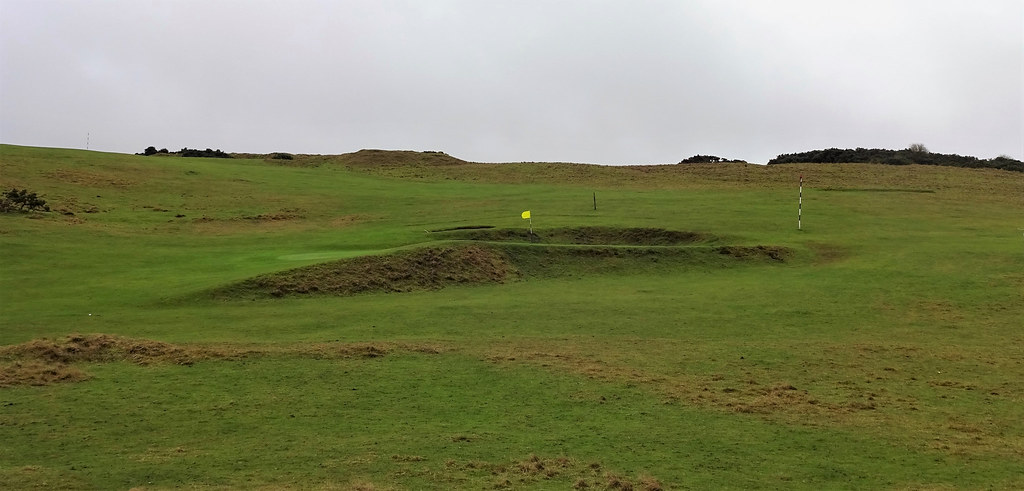
Remarkably, technology has made reaching this green in one a possibility under the right (and rare) conditions. Consequently, an approach from the high side of the fairway is possible.
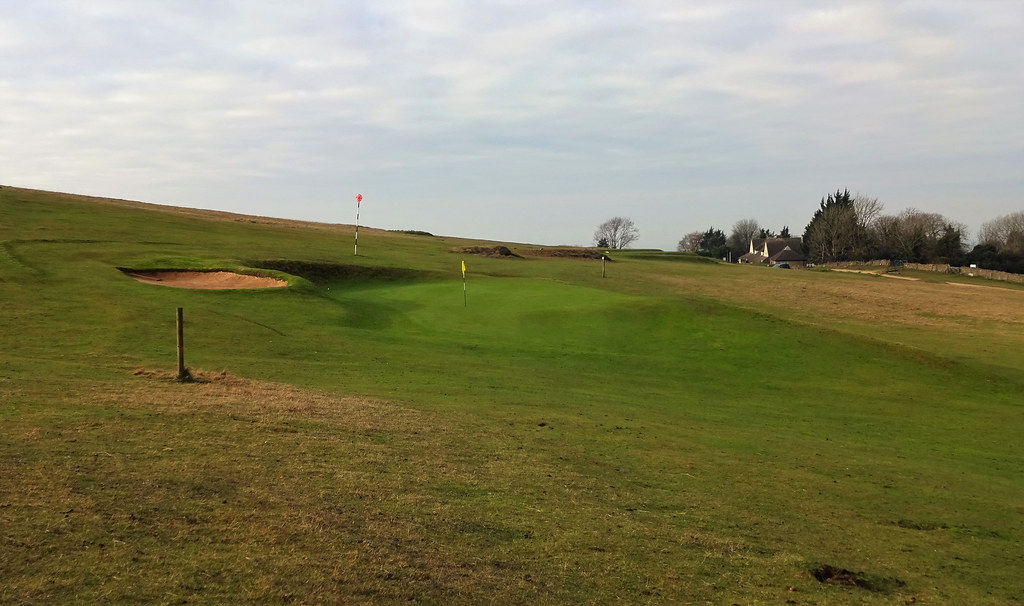
Behind the green.

The third continues the blind drive/uphill theme with the approach being a rather rollicking ride. The green's false front is pronounced and is all the defense this small target requires. The 4th is a shocker to the senses. The magnificent setting of the course is fully revealed. However, all is not as it seems. The fairway corridor is huge, but for any chance to hit the green most will need to be well left near the 150 boulder. However, its a slippery slope to being too far left! Behind the green.
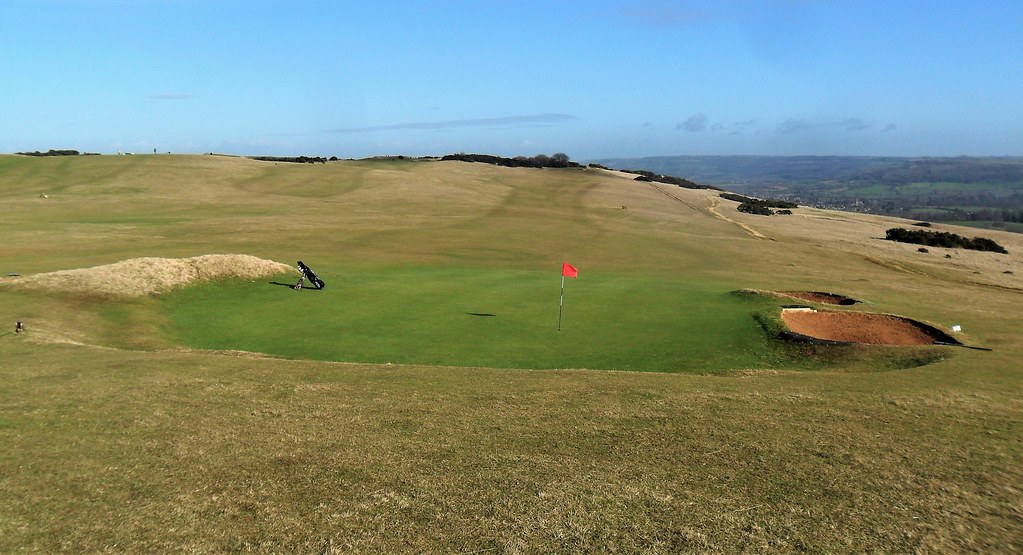
Left of the green.

#5 introduces the golfer to the quarries left and rear of the green. Cleeve Hill is very generous off the tee, indeed too generous in spots, but despite visual evidence to the contrary, this is a far tighter driving hole than it seems. The golfer needs to position himself to best take advantage of slopes, but gorse awaits for the pulled tee shot. The wonderful greensite from short right.
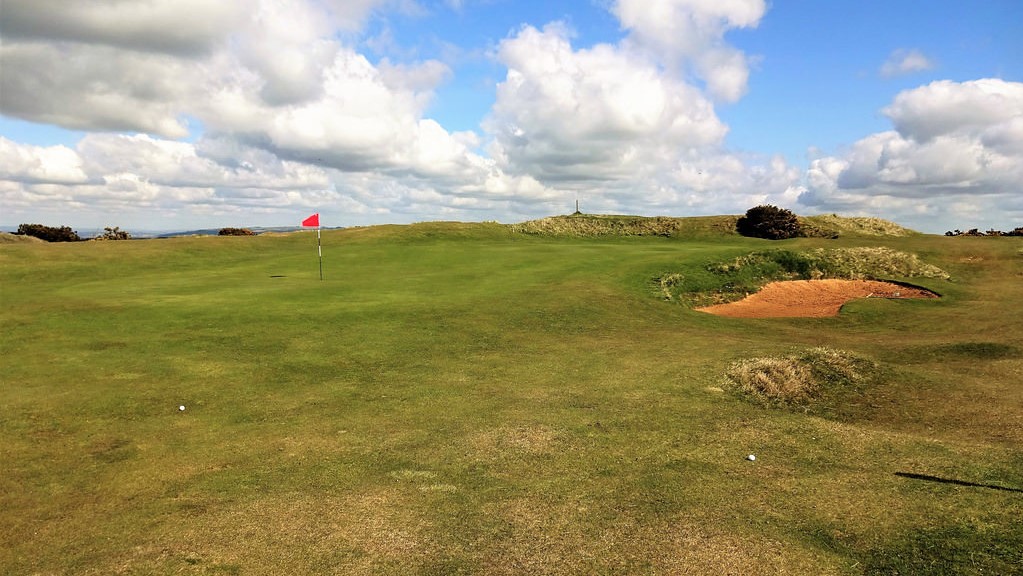
The first one shotter, #6 is very fine...as are all the par 3s.
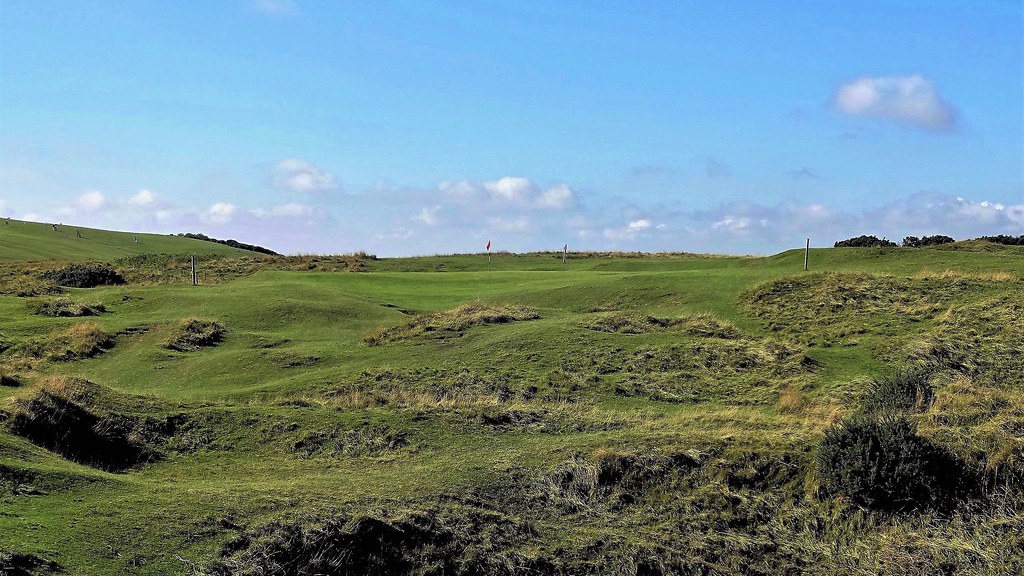
The 6th with the 5th in the background.
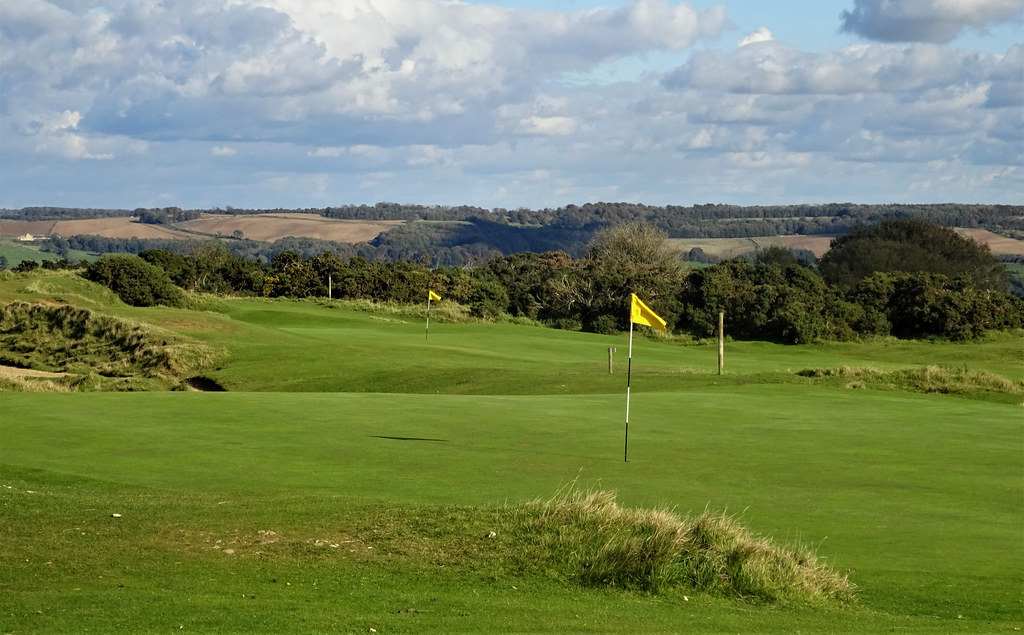
The 7 & 8th were altered sometime after 1990. I am not sure of the changes, but I suspect it involved moving the holes from the hill right of the current 7th. That said, due to an outstanding green, it is difficult to imagine the 7th green being new. Playing over a quarry and broken ground, the green sits well down the hill in what appears to be a quarry. The approach is difficult due to the angled and severely sloped green. To get the best angle one has to make the hole play longer and come in from the left. A view behind the green from near the 8th tee reveals the sharp false front which covers approximately half the putting surface.

The 8th is an uphill slog. The closing hole for the front nine is a visual delight. The drive plunges madly down a right to left sloping fairway. The approach is a bit uphill to a hanging green. There is a greenside bunker about 5 yards to the right which cuts off the approach from too far right.
View from near 10th tee.
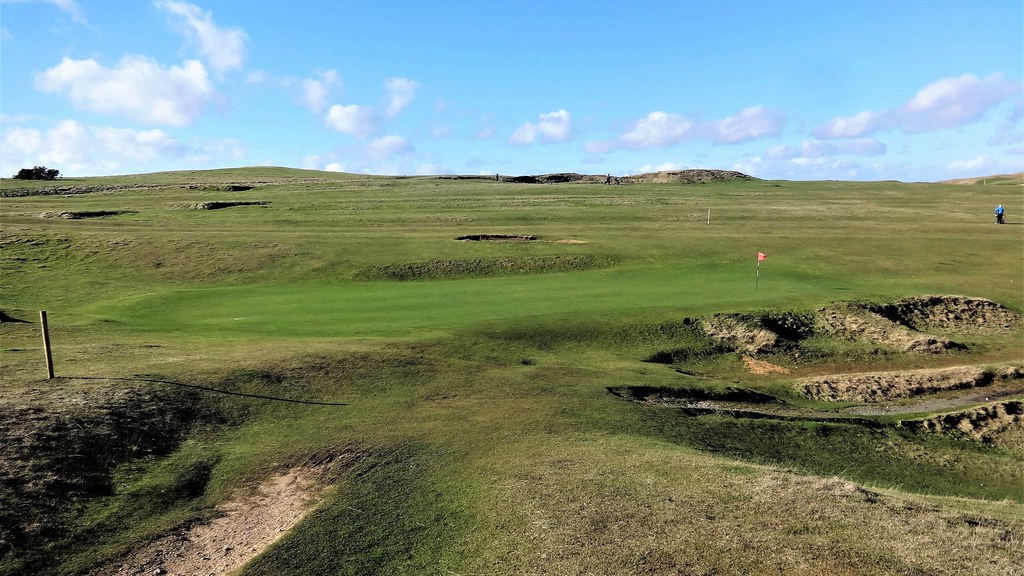
Its been a long time coming, but the second par 3 is worth the wait. The 10th is one of the new post 1990 holes, a 200 yarder playing down the seam of where two hills meet. The approach kicks in from the right even though it looks like either side will do.

The eleventh too is a newish hole running across the valley to yet another raised green. The design fits beautifully with the existing holes. A bruiser hole, #12 is long, plays uphill and usually into the wind. This is one of several drives where large, rugged bunkering would strategically and aesthetically improve the design. Because 10 & 11 are new, this hole must have played from a different direction, but the current iteration is superb. The 12th is also an example of some unusually shaped greens.

Cleeve Hill is chocker block full of good holes and it could be the case that 13-16 are the only remaining original holes. The thirteenth is likely to be the one hole folks will remember for a long time. After another of what seems like endless uphill drives, we pass The Single Beech spotted all that time ago on the 4th tee. There are memorial plaques in the wall surrounding the tree.
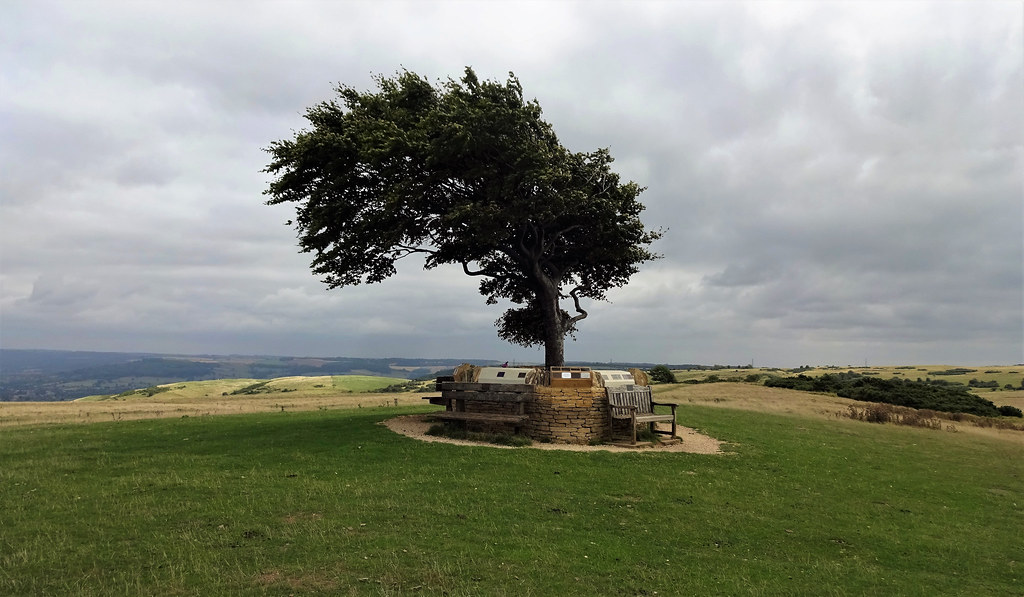
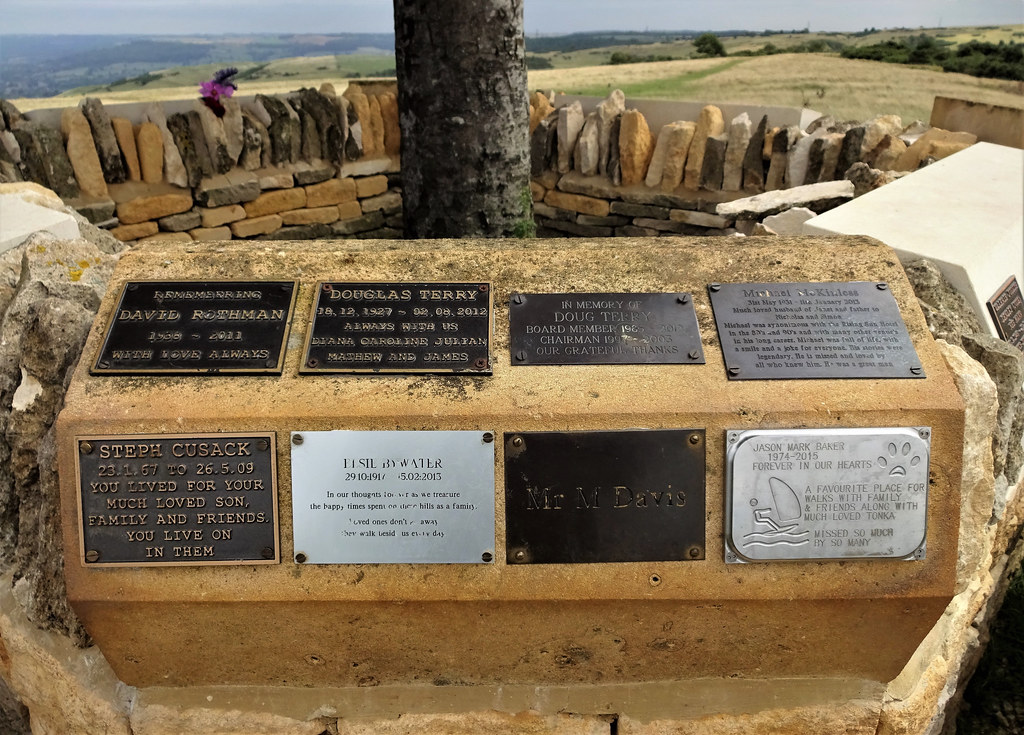
After passing the tree the hole waddles downhill. Even if downwind the approach is incredibly demanding. Cheltenham and its famous racecourse lie just below the Cotswold escarpment. It is here that the famous Cheltenham Festival is held each March. The biggest prize of the week is the coveted Gold Cup. Less than 15 miles futher south is Painswick Beacon! Golfers should consider themeselves extremely fortunate to play through such an historical site.
Various photos showing off this outrageous green. Most folks will end up in a gully with either their second or third.
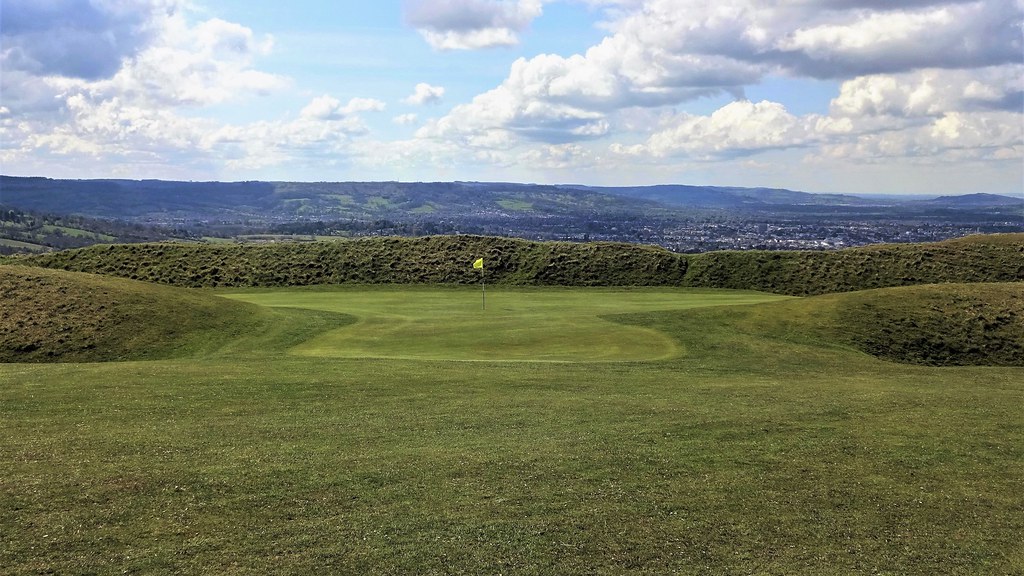
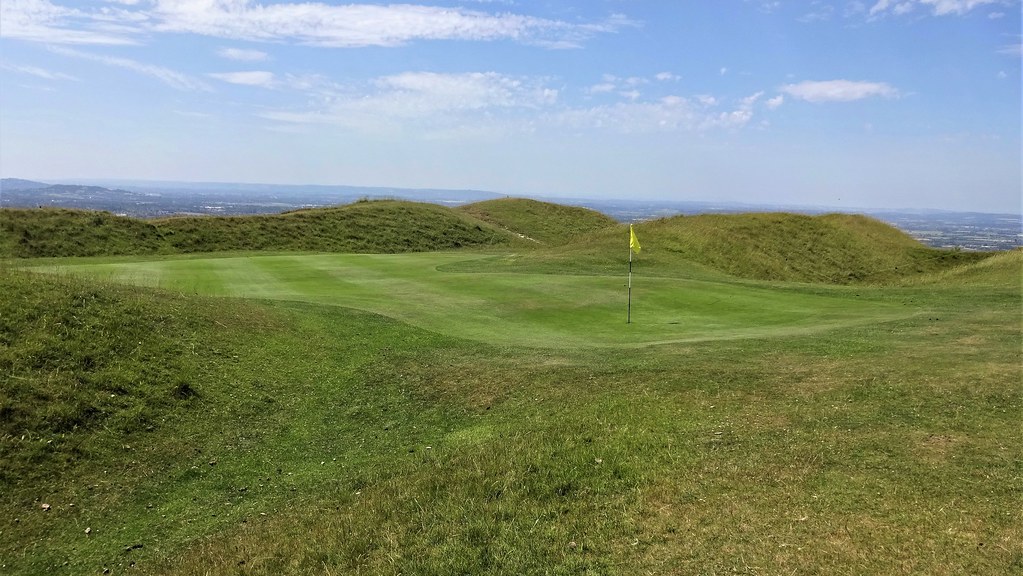

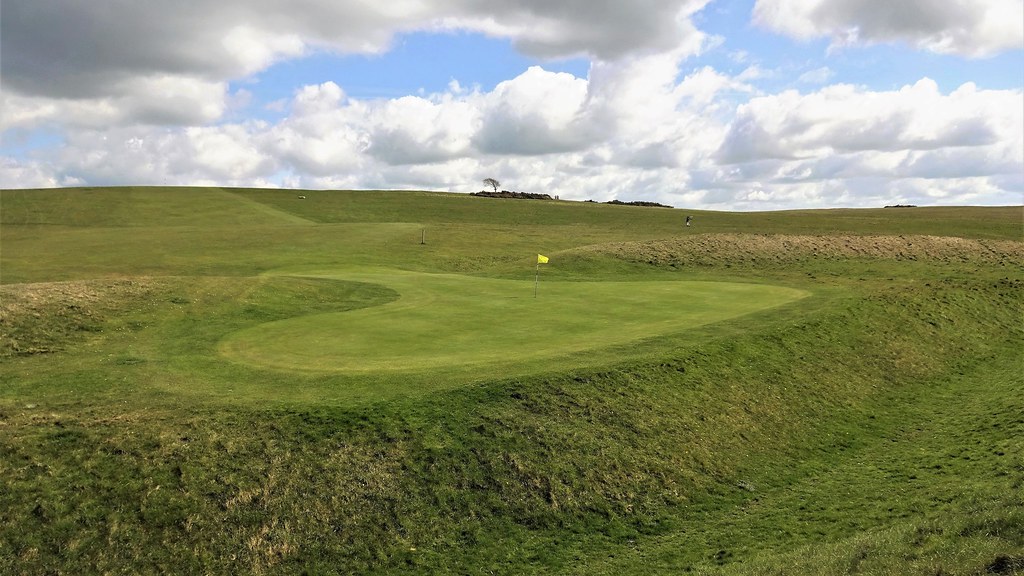
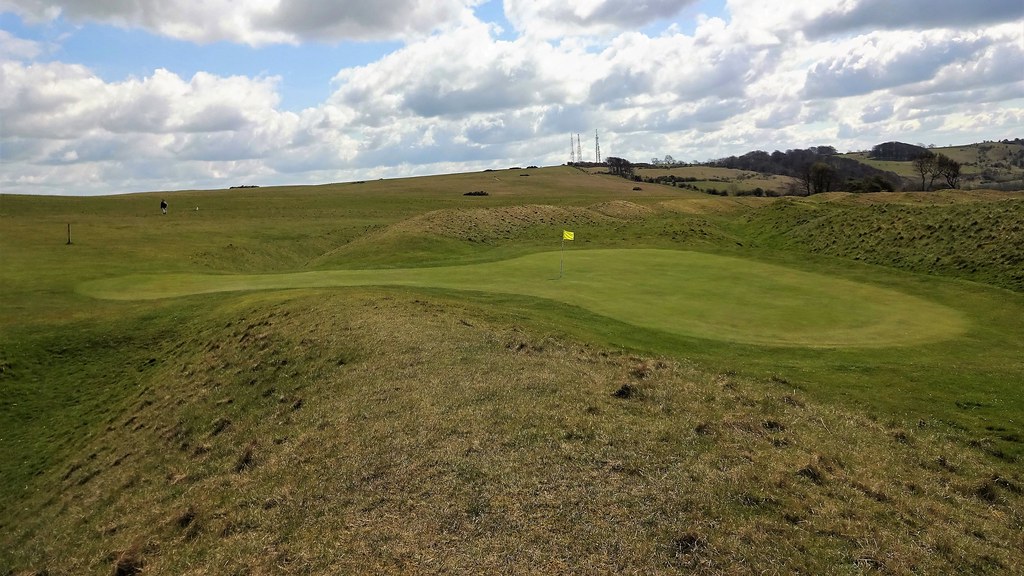
You guessed it, another blind tee shot awaits on the 14th. Cleeve Hill is mainly about the excellent green sites.

We now hit a trio of holes which are of such excellence that it makes me ashamed to have waited all these years to visit Cleeve Hill. People simply don't talk about this course! Like the 6th, 15 plays over a quarry. The photo was taken from the ladies tee, well in front of the 145 yard men's tee. I think the club could take better advantage of the quarry if the green were extended to its edge.
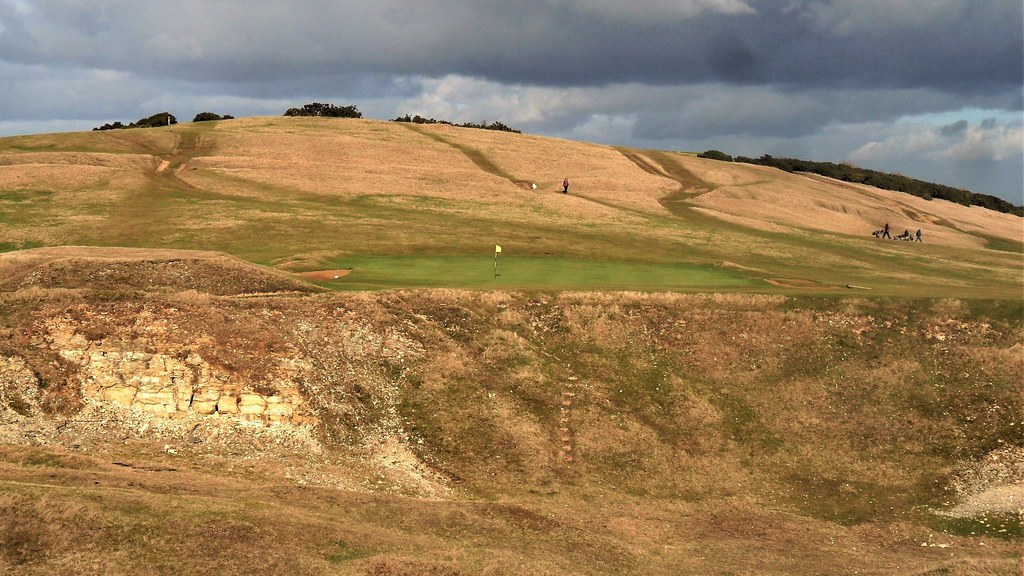
Playing uphill at 185 yards, the 16th ups the anxiety level by several notches. First, a look at the hole from near the 15th tee offers some scale of the property.
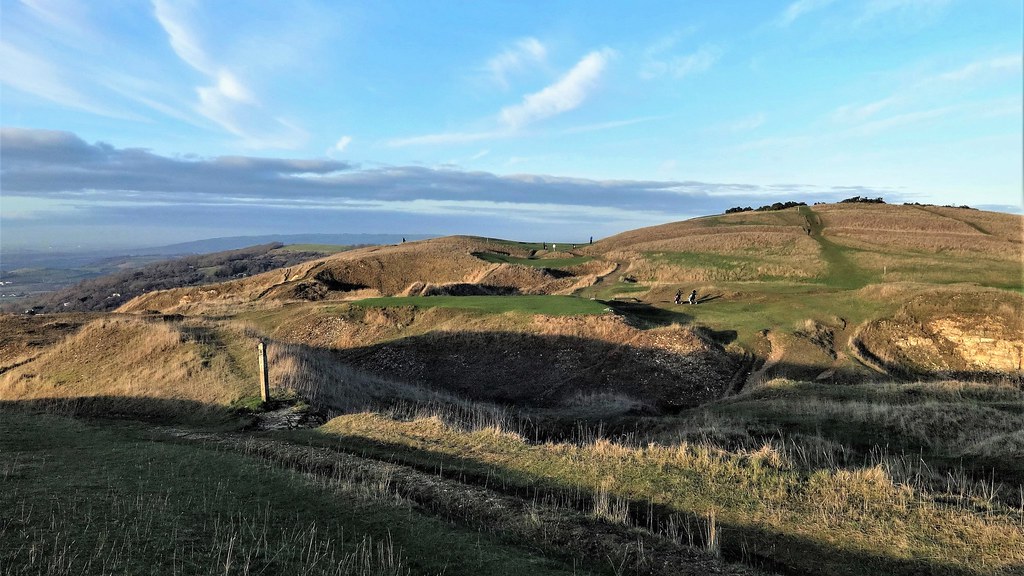
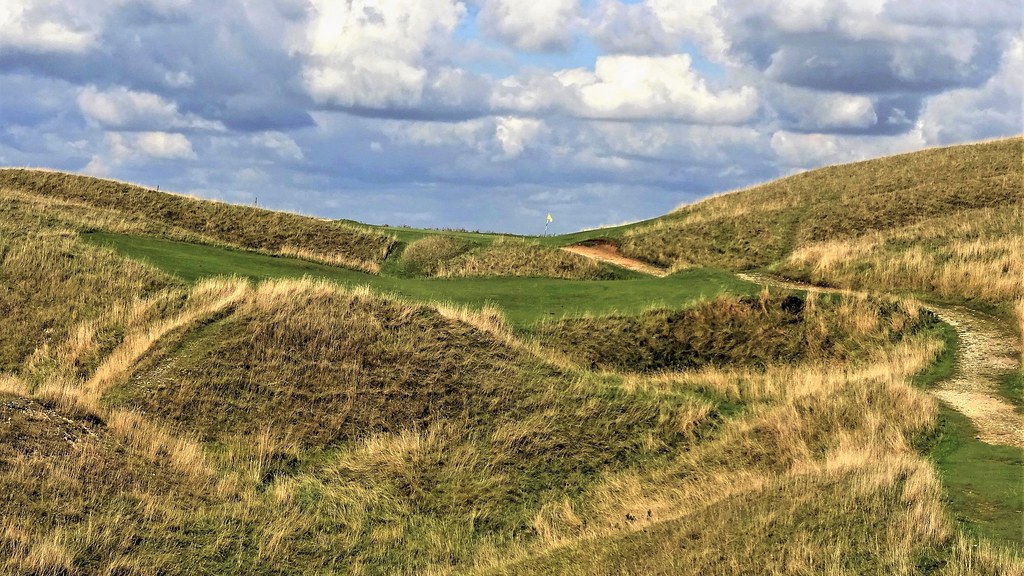
Behind the green.

Not to be outdone by the 13th, #17 is an incredible hole. The blind quarry down the left has to be one of the most harsh, absurd and fanciful blind hazards I have ever come across...and I wouldn't change a thing. There is a second blind quarry a bit right of the aiming pole. The green is well below the driving zone and is often blind for the approach.

Looking toward the green from the left quarry, the 7th is top centre.
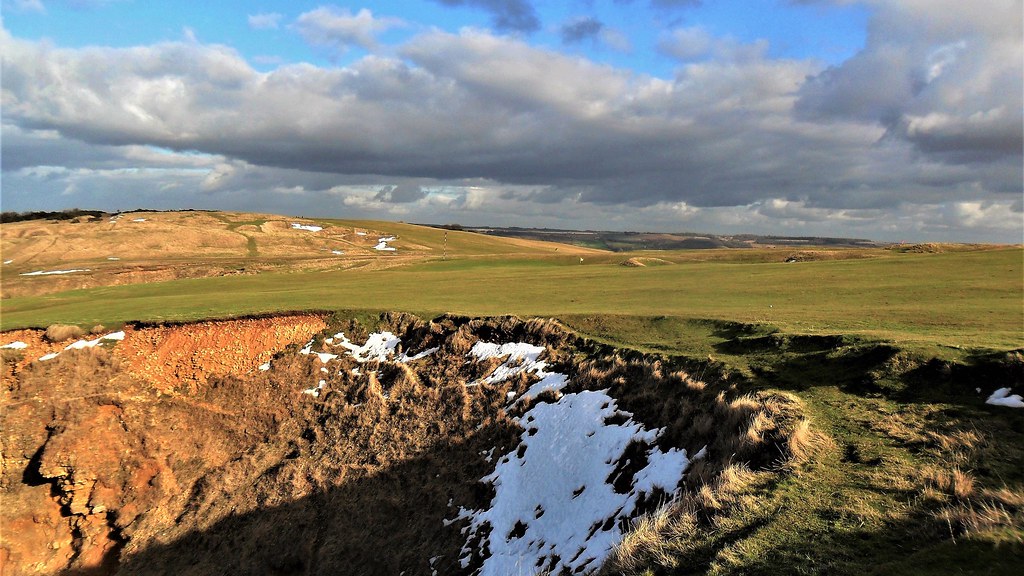
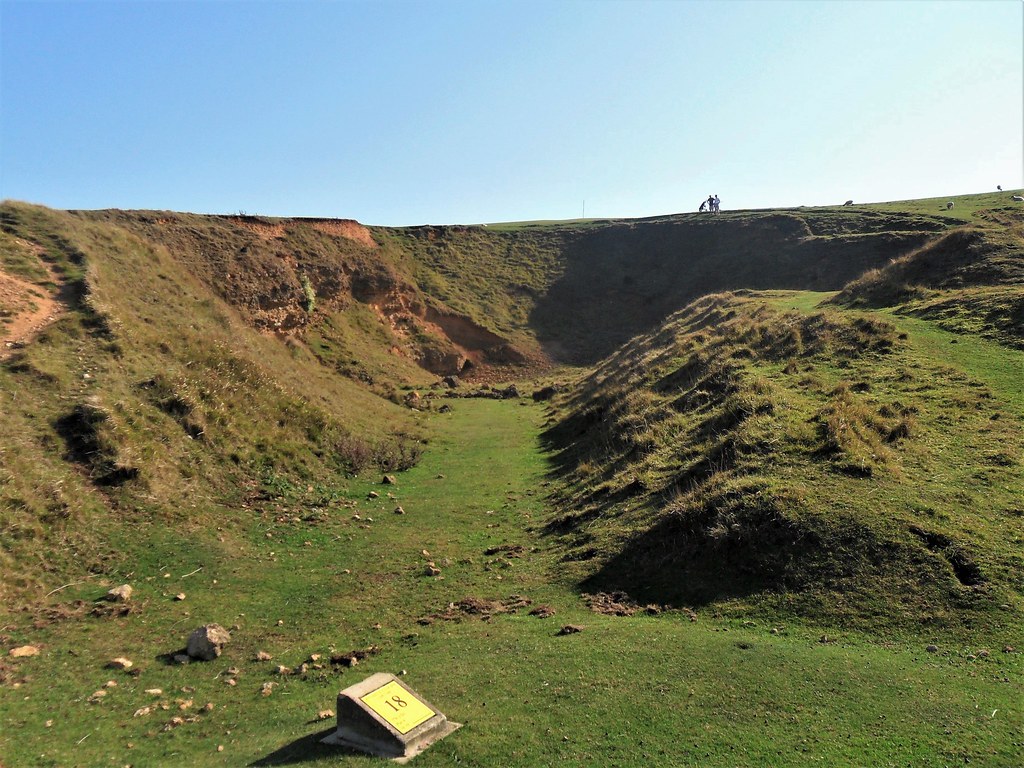
It had to be that 18 couldn't match the previous five holes and that is indeed the case. Still, this is a good hole which offers a decent chance of a birdie if one can negotiate the gullies striped across the fairway.

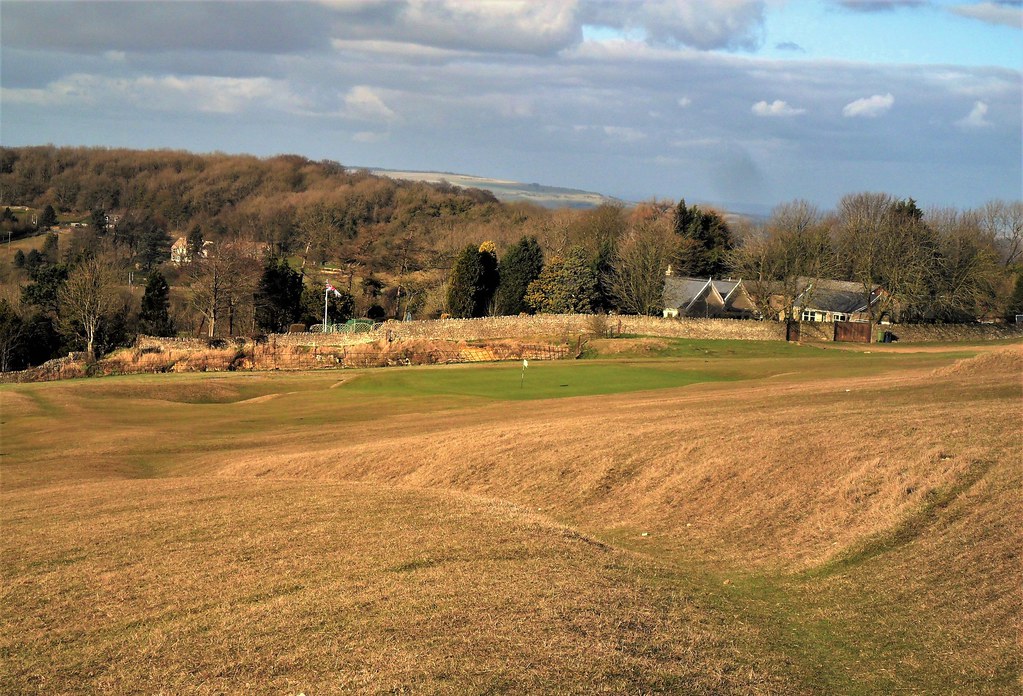
I gush over Cleeve Hill, but it isn't without issues. Thankfully, the conditions have greatly improved. The greens are now on par with many well known UK courses. However, the new management hasn't amended the dubious bunker scheme. The powers that be really should consider a complete rethink as to the function they hope the bunkers should serve. As it is now, the bunkers are near greens when often times the green sites are good enough to be sand free. It is the driving aspect of the design which needs some bunkering to add interest and variety.
I do, however, have great admiration for Cleeve Hill and think a good many others would as well. While #s 13 and 17 are the only All England candidates (mind you that is a damn sight better than many more famous courses), there are many compelling holes and shots. Cleeve Hill also makes a perfect partner for those other two prizes of the Cotswolds; Painswick and Minch Old. Dare I say the Stranahan Course at the Players Club would make a fine fourth leg? Regardless, all should make their way to Cleeve Hill and feast on an excellent design. 1* 2024

More Cotswold Gems
Minchinhampton Old Course
http://www.golfclubatlas.com/forum/index.php/topic,48765.msg1100536.html#msg1100536Painswick
http://www.golfclubatlas.com/forum/index.php/topic,51629.msg1181534.html#msg1181534 Stinchcombe Hill
http://www.golfclubatlas.com/forum/index.php/topic,60660.msg1437536.html#msg1437536Ciao